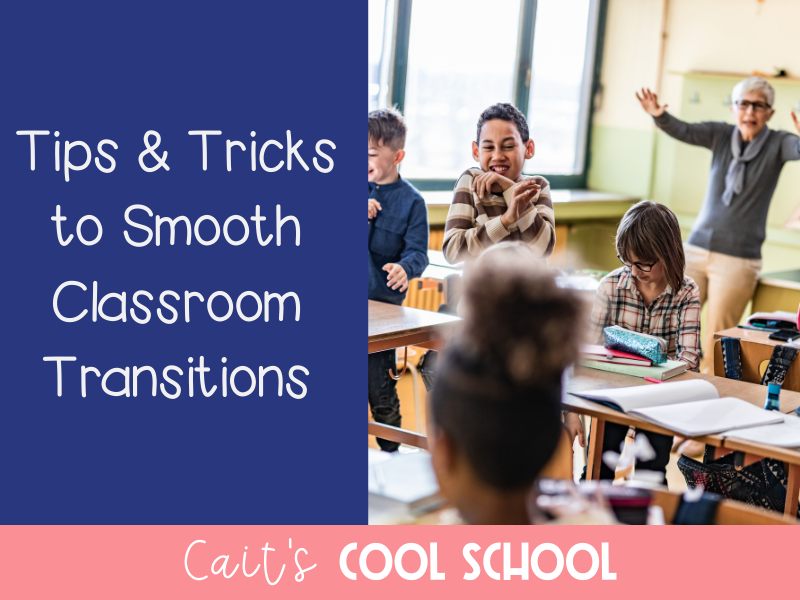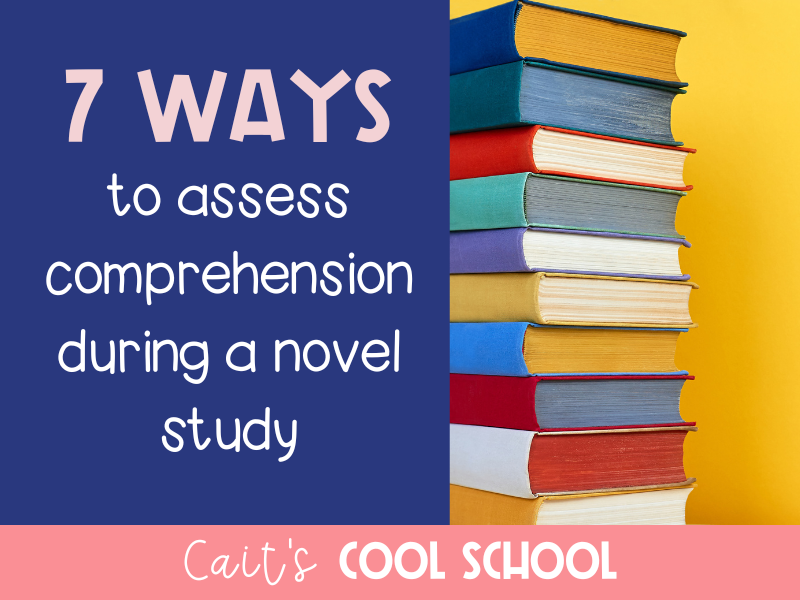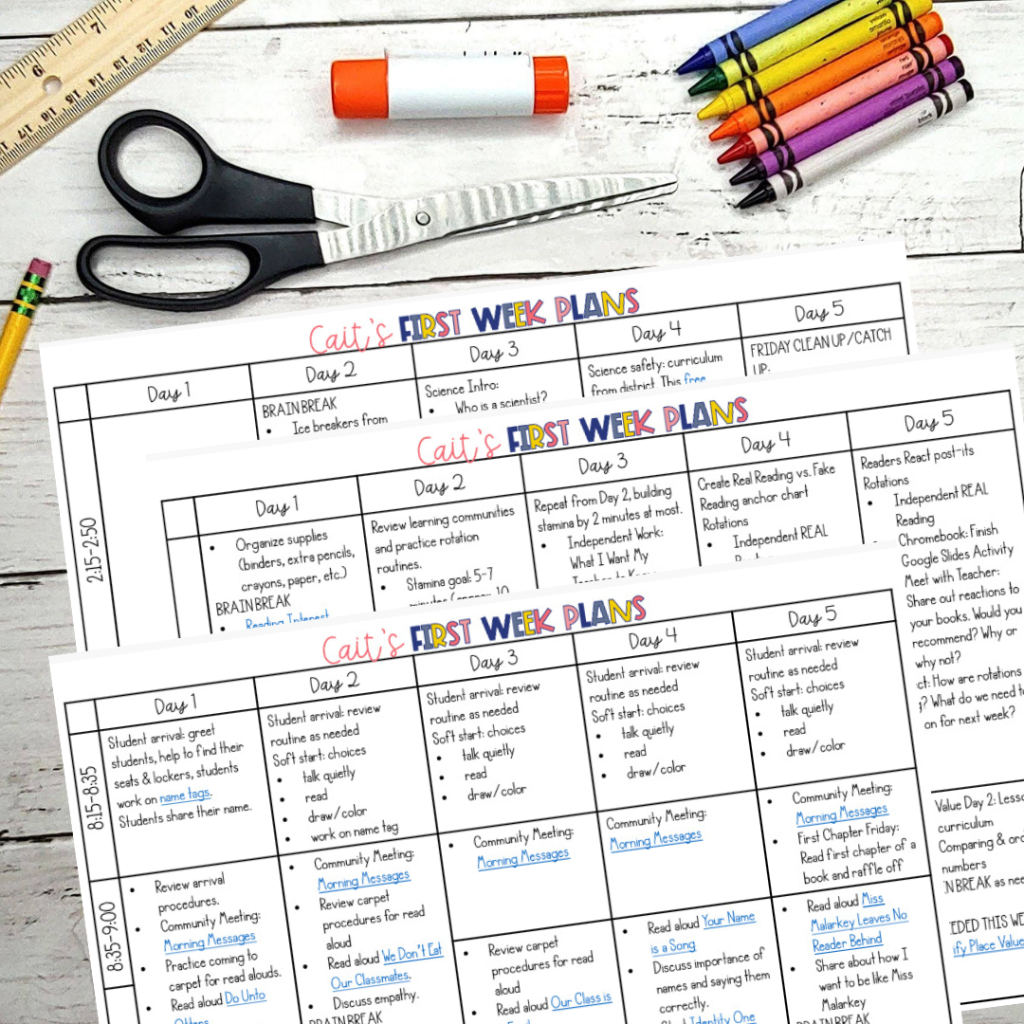
What is about transitions that can make even the best class go a little bananas? 🤪🤪🤪 I fully admit that sometimes I’m reluctant to switch my class from one activity or subject when they’re all working so well. When I was departmentalized, I knew I needed to be ready to switch to respect my teammates’ instruction times and be ready for the next group. This is why transitioning is one of those classroom management routines you need to establish early on.
First, establish a call to attention strategy. This can be anything from clap routines to a call out (1-2-3 eyes on me is a classic!) or a wireless doorbell like this one (I tend to use this for centers/rotations) or even turning off the lights. Practice this a few times with students. Check out this post for some more attention getter ideas.
Next, for each subject, establish an “order of events.” I like to write this on the board as a mini-schedule. We already have our main schedule, but I like to break down each subject like a to-do list. For example, our reading block might say: Read Aloud, Brain Break, Mini-Lesson, Rotations, Brain Break. This is our daily order, so the students are used to it. Writing it on the board is a visual reminder, plus it allows me to introduce something else if needed. I use this list to let them know if we’re switching it up for some reason.
Then, how do we get from one place to another? Are you calling table groups, students by name, by birth months, by what they’re wearing? Do you say a magic word and they all move at once? Determine what works for you. I tend to call by table group if we’re doing whole group, or by students who are cleaned up and ready. We move the carpet for our read aloud, then back to desks/tables for our mini-lesson, and then we’re all over the place for rotations. Students need to know when and how to move. Speaking of when…
The most important tip is giving time reminders. Before we begin an activity/work time, we look at the clock, establish the time, give an amount of work time, and then establish what the end time is. While working, I’ll remind them to look at the clock and give a 5 minute warning. I also let them know if they need to be finished that day or not.
Conversation sounds like this:
Me: “We’ll be having partner work time for 20 minutes. If you finish early, you may read independently or choose another early finisher. What time is it now?”
Student: (practicing clock reading skills!) “11:25.”
Me: “Count ahead 20 minutes. When will we need to stop? Where will the clock hands be?”
Student: “11:45. The big hand will be on the 9.”
Me: “Awesome sauce. Remember, you need to have at least parts 1 and 2 finished today. Let’s start!”
If this is all partner work, I’m probably walking around, facilitating, and helping as needed. I might pull a small group to give extra support. Pro tip: If you know you get sucked into the zone with small groups or walking around, make a student a “Time Keeper” or project a timer. I love this free website. The races are fun, but I’ve also used the simple clock or candle for groups that are distracted easily.
When time is up, I use my attention getter to bring everyone back together. The last step to transition is knowing what’s next. If we’ve practiced this enough, it only takes a couple reminders. “Where should your work go? What are we doing next?” Then they get a verbal countdown to clean up and move.
It’s worth the time to practice transitions from day 1. You’ll thank yourself later.
Cait’s Cool School
Sounds easy, right? You’ll be happy to hear it’s not. Or at least you’re not alone if you’re struggling. This is one of those things that we do SO well by November. Or really, I love to watch it all unfold in March. When my babies have become a well-oiled machine and can tell you or anyone how it all works. How do we get to that point? Practice, practice, practice.
During the first week of school, we practice all transitions multiple times. Go to the carpet for read aloud. Back to your seats for brain break and mini-lesson. Time check before rotations. Practice talking or working and use the attention getter to come back. It’s worth the time to practice transitions from day 1. You’ll thank yourself later.

Looking for more classroom management ideas? Try this free email course with five days of activities and resources to help establish a strong management system and community.
You can also check out the classroom management section of my blog. 😀
This post may contain some affiliate links, which means if you click on one of the links and make a purchase, I’ll receive a small commission. You will never incur a fee or charge for this.





 The first FIVE days of lesson plans for the beginning of the year.
The first FIVE days of lesson plans for the beginning of the year.